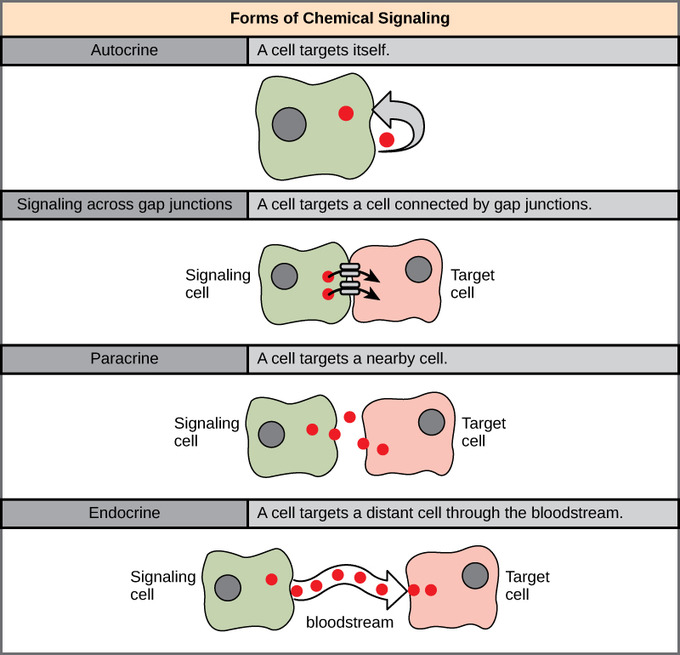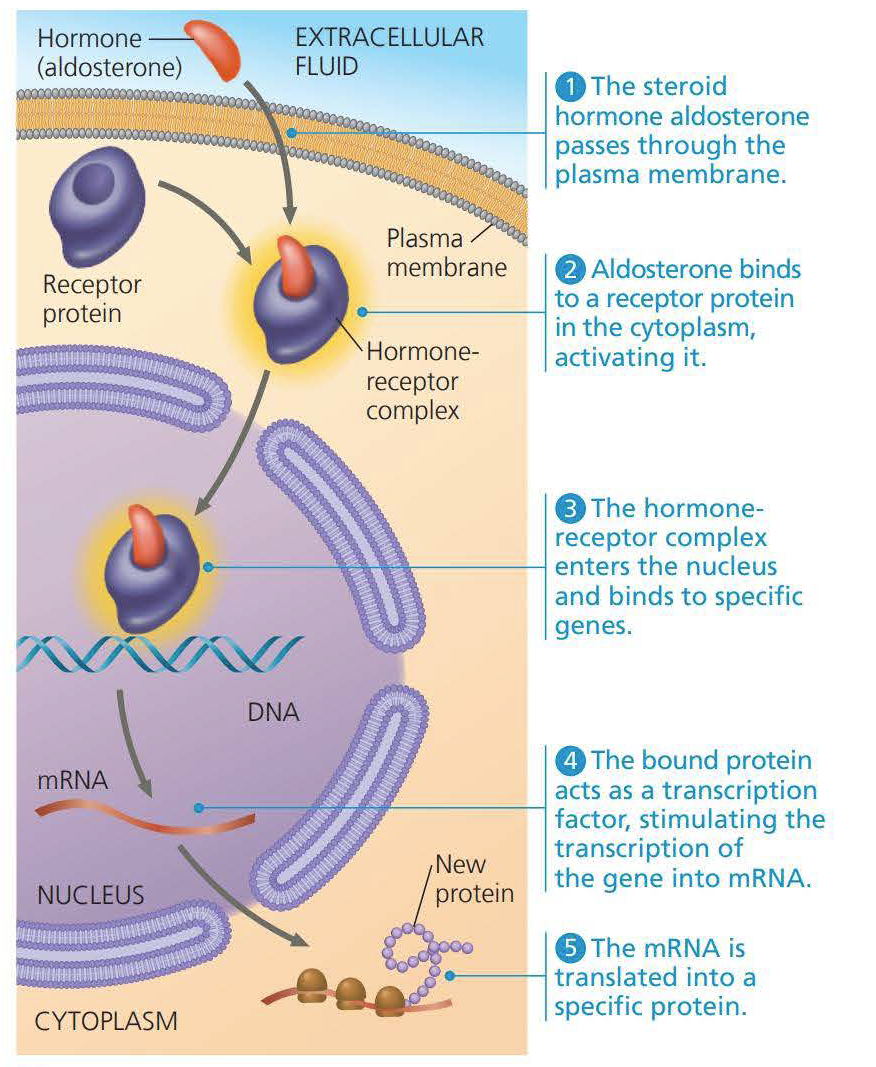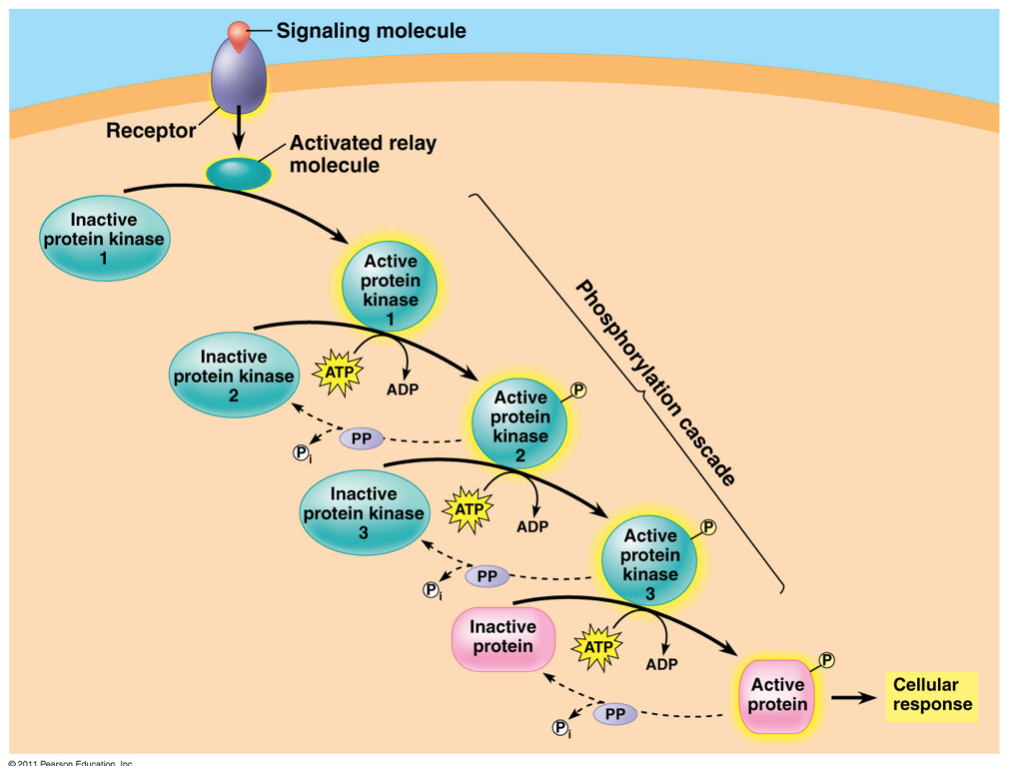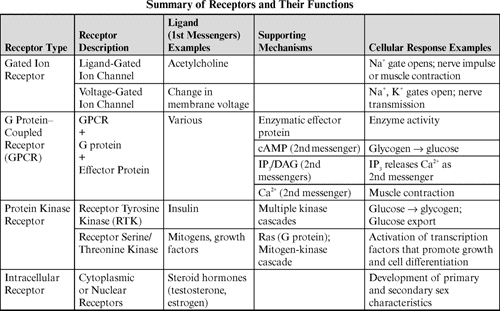What is cell communication?
Multicellular organisms are composed of many different types of cells. To work toward a common goal, all these cells must communicate with each other. But how do these cells communicate? Well, let's find out!
Types of cell communication.
Direct contact between cells allows different types of molecules to travel from one cell to another. Proteins, carbs, and lipids can move freely between cells.
Instead of simply passing through the cell membrane, these molecules travel through gap junctions between cells. Gap junctions connect cells together and provide a path for ions and other small molecules to pass through them. This takes less time than the molecules exiting one cell and then reentering the next. Instead of having a gap junction, plants have plasmodesmata. Plasmodesmata are similar to gap junctions in that they are also channels that allow small molecules to pass between cells.
In nerve cells, there is synaptic signaling. Synaptic signaling only happens in nerve cell - nerve cell connections or nerve cell - muscle cell connections. Neurotransmitters are chemical signaling molecules that are transferred from one cell to another. This transferring can trigger a response, such as a muscle contraction.
Paracrine signaling is a type of signaling that is only used for cells that are close to each other/in the local area. Cells secrete substances that bind to nearby cells, causing a response. Growth factors are an example of paracrine signaling.
Endocrine signaling is a mechanism used to send signals over large distances. One part of the body releases hormones that travel through the body and target the receivers, causing a response.

Signal Transduction Pathways
Signal transduction pathways are pathways in which a signal leads to a response. They begin with a signaling molecule, which binds to a receptor protein on the membrane of a target cell. This binding causes the receptor protein to change shape.
There are two types of signaling molecules:
- Hydrophilic ligands cannot cross the phospholipid bilayer membrane, so they bind to membrane receptors that are located on the outside of the plasma membrane.
- Hydrophobic ligands can cross the phospholipid bilayer membrane. After entering the cell, they bind to intracellular receptors that are inside either the cytoplasm or nucleus.
Just like signaling molecules, there are are two types of receptor proteins:
- Membrane receptors are located in the phospholipid bilayer. It spans the entire membrane, and the part of it that faces toward the outside of the cell contains a binding site for the signaling molecule/ligand. When the ligand binds to the receptor, the part of the receptor that faces the inside of the cell triggers a chemical reaction.
- Intracellular receptors are located inside the cytoplasm or nucleus of the cell. They can only be activated by hydrophobic ligands.

Second messengers are also an essential part of signal transduction pathways. Second messengers are usually small, nonprotein molecules that are either hydrophobic, hydrophilic, or gaseous. They usually amplify a signal because of their high number and their ability to easily diffuse through the cell. A couple key examples of second messengers are Ca2+ (calcium ion), IP3 (inositol triphosphate), cAMP (cyclic adenosine monophosphate), and DAG (diacylglycerol).
Another important part of signal transduction pathways is signaling cascades. Enzymes repeatedly activate the next enzyme. Since enzymes can be used more than once and the number of products after each enzyme is used increases, the signal can be amplified.
Kinase cascades/phosphorylation cascades include a number of kinases (kinases add phosphate groups to substrates). Scaffold proteins keep the enzymes close together and ensure that enzymes from different cascades stay away from each other. Protein phosphatases remove phosphate groups from substrates, causing the signal to terminate.

Types of Receptors

More details on these receptors are in part 2!
